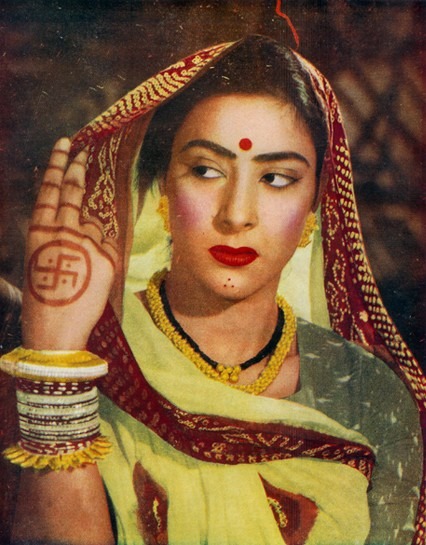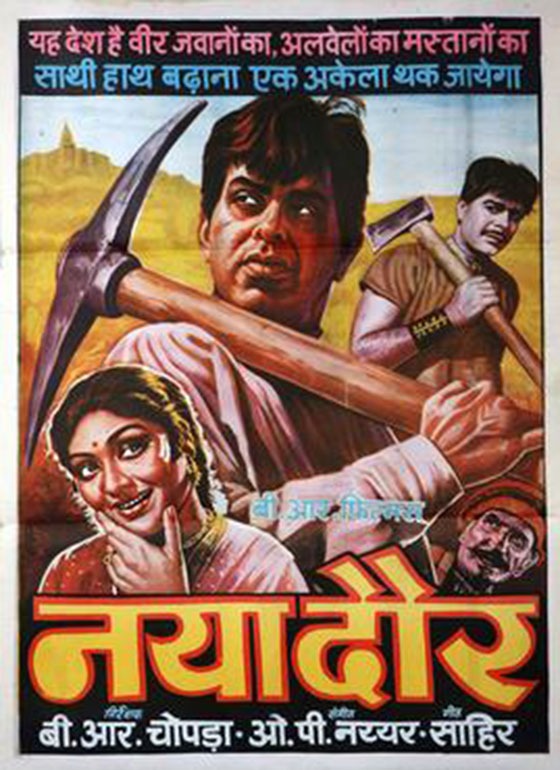Bollywood began its journey to becoming a cinematic powerhouse in the 1950s. This era saw the rise of iconic stars like Dilip Kumar and Raj Kapoor, whose performances are still celebrated today. Films such as ‘Mother India’ and ‘Pyaasa’ didn’t just entertain; they set new benchmarks for storytelling, weaving narratives that struck a chord with audiences worldwide. The melodies of Naushad and the voices of Mohammed Rafi and Lata Mangeshkar gave these stories a soul, despite the industry’s technological and financial hurdles.
This period wasn’t just about making movies; it was about laying down the cultural and artistic foundations that Bollywood stands on today. Let’s explore how this golden era continues to shape the industry’s path forward.
Key Takeaways
- Emerging stars like Dilip Kumar and Raj Kapoor set the stage for iconic performances.
- Films such as ‘Mother India’ and ‘Pyaasa’ highlighted Bollywood’s storytelling evolution with complex themes.
- Musical innovations by Naushad and iconic singers like Lata Mangeshkar defined the era’s sound.
- Directors like Bimal Roy introduced narrative styles focusing on societal challenges, shaping Bollywood’s future storytelling.
- The industry overcame post-independence economic constraints, fostering creativity and setting a foundation for future successes.
Emergence of Iconic Stars
In the 1950s, Bollywood saw the rise of iconic stars like Dilip Kumar and Raj Kapoor, who left an indelible mark on Indian cinema. Dilip Kumar, known as the Tragedy King, captivated audiences with his powerful performances, setting a high bar for acting prowess. Alongside him, Raj Kapoor, dubbed the Showman of Indian Cinema, won hearts with his charismatic portrayal of the lovable tramp, blending entertainment with social commentary seamlessly.
You also witnessed the emergence of Nargis, the first lady of Indian cinema, who showcased unparalleled versatility in her roles. Her performances were not just acts; they were a revelation, making her an unforgettable figure in Bollywood history. Alongside her, Waheeda Rehman, with her ethereal beauty and nuanced acting, made a significant impact, leaving a legacy of classic performances that are cherished to this day.
Then there was Dev Anand, the evergreen romantic hero, whose charm and charisma were unmatched. He had a unique flair, bringing a new dimension to the romantic hero archetype, and his films became a staple for Bollywood romantic dramas.
These iconic stars not only defined an era but also laid the foundations for generations to come, making the 1950s a golden era of Bollywood.
Breakthrough Films
You’ll find the 1950s were a golden era for Bollywood, marked by films that not only entertained but also defined genres. Films like ‘Mother India’ and ‘Pyaasa’ broke new ground, offering audiences stories that resonated deeply with the cultural and social ethos of the time. These iconic releases set the stage for what Bollywood could achieve, marrying compelling narratives with rich, cinematic expression.
Iconic 1950s Releases
Several breakthrough films from the 1950s, such as ‘Mother India’ and ‘Pyaasa’, reshaped Bollywood by introducing themes of resilience, melancholy, and social critique. You’ll see how icons like Nargis in ‘Mother India’ and the poetic storytelling of Guru Dutt in ‘Pyaasa’ brought new depth to Indian cinema, challenging audiences while mesmerizing them with powerful narratives and performances.
| Film | Influence |
|---|---|
| Mother India | Elevated Nargis’s character, symbolizing strength. |
| Pyaasa | Showcased poetic melancholy by Guru Dutt. |
| Naya Daur | Critiqued modernization, reflecting Nehruvian ideals. |
| Madhumati | Introduced reincarnation themes, directed by Bimal Roy. |
| Kaagaz Ke Phool | Guru Dutt’s personal statement on filmmaking struggles. |
Genre-Defining Moments
Exploring breakthrough films of the 1950s, we uncover genre-defining moments that reshaped Bollywood’s narrative and artistic landscape. ‘Mother India’ stood tall, elevating the portrayal of Indian women with dignity and strength, marking a new era for female-centric narratives. ‘Pyaasa’ delved into poetic melancholy, setting new benchmarks for emotional depth and storytelling innovation in Indian cinema. ‘Naya Daur’ critiqued rapid modernization, mirroring Nehruvian ideals and igniting discussions on progress versus tradition. ‘Madhumati’ introduced reincarnation with a noir twist, showcasing storytelling innovation. Finally, ‘Kaagaz Ke Phool’ offered a glimpse into the personal struggles of a filmmaker, pushing the boundaries of introspective filmmaking. Together, these films marked the Golden Age of Hindi cinema, weaving a rich tapestry of genre-defining storytelling.
Storytelling Evolution
As you explore the 1950s era of Bollywood, you’ll notice a significant shift in how stories were told. New narrative styles emerged, thanks to the debut of iconic storytellers who weren’t afraid to tackle complex themes of modernity, tradition, and social change. This period set the stage for what would become the industry’s Golden Age, revolutionizing Indian cinema with its rich storytelling and cinematic excellence.
Narrative Styles Emerge
In the 1950s, Bollywood underwent a transformative shift, embracing more sophisticated narrative styles that deeply resonated with its audience. The Indian Hindi film industry discovered the power of sophisticated storytelling, taking audiences on unforgettable journeys. Directors began weaving complex characters and societal issues into their films, making every story not just a movie but an experience.
Here’s what set the 1950s apart in Bollywood’s narrative evolution:
- Innovative Narrative Structures: Films adopted unconventional storylines, moving beyond linear storytelling.
- Complex Characters: Audiences saw characters with depth, facing moral dilemmas and societal challenges.
- Emotional Engagement: The focus shifted to plots that stirred emotions, making viewers feel connected on a deeper level.
This era marked a significant milestone in the Hindi film industry, setting the stage for the dynamic storytelling Bollywood is known for today.
Iconic Storytellers Debut
The 1950s saw the debut of iconic directors like Bimal Roy and Mehboob Khan, who transformed Bollywood’s storytelling landscape. These storytellers, along with V. Shantaram and BR Chopra, pioneered a storytelling evolution, focusing on themes like nation-building, modernity, and social change. Their films, such as ‘Shree 420’ and ‘Mother India’, became benchmarks for the Golden Age of Bollywood, illustrating the powerful conflict between materialism and virtue and the transformative narratives that inspired change.
| Director | Impact on Bollywood |
|---|---|
| Bimal Roy | Pioneered realism in storytelling. |
| Mehboob Khan | Explored complex themes of social change. |
| V. Shantaram | Focused on transformative narratives. |
| BR Chopra | Addressed modernity and tradition. |
Their work laid the foundations for what Bollywood would become, marking the 1950s as a pivotal era in cinema.
Musical Milestones
Explore the 1950s, when Bollywood experienced musical milestones that still resonate in the hearts of millions today. This era was lit up by the brilliance of Naushad, who composed timeless songs like ‘Pyar Kiya To Darna Kya’ in Mughal-e-Azam. You’ve probably hummed along to melodies voiced by Mohammed Rafi and Lata Mangeshkar, whose vocal talents became the soundtrack of the decade. Shankar-Jaikishan and Sahir Ludhianvi, among others, entered into iconic musical collaborations, weaving narratives that touched souls.
Here’s what made the 1950s truly remarkable in Bollywood music:
- The Rise of Playback Singing Giants: Mohammed Rafi, Lata Mangeshkar, and Mukesh, with their unique voices, became the preferred choice for filmmakers, bringing songs to life in a way that was unheard of before.
- Iconic Musical Collaborations: The partnerships between music directors like Naushad and lyricists like Sahir Ludhianvi set a new benchmark for storytelling through music, creating a legacy that lasts to this day.
- Anthems of the Era: Songs like ‘Awaara Hoon’ not just entertained but became the voice of a newly independent nation, encapsulating the hopes and dreams of its people.
In the 1950s, Bollywood’s musical landscape underwent a transformation that shaped its future, making it a period to remember and celebrate.
Industry Challenges
Despite its booming musical success, Bollywood in the 1950s faced several obstacles, from technological hurdles to financial strains, that tested its resilience and creativity. Shifting to sound films wasn’t smooth due to technological limitations, yet this era’s filmmakers found innovative ways to tell their stories, showcasing their adaptability. The post-independence economic constraints tightened budgets, making film production a challenging feat. However, this led to more creative problem-solving, with producers maximizing resources to bring their visions to life.
Censorship issues, imposed by the government, threatened creative freedom, pushing directors and writers to find subtle, clever ways to express their messages. Despite these restrictions, the 1950s witnessed groundbreaking films that subtly tackled social and political themes. The competition from regional cinema industries added another layer of challenge, yet it also fostered a healthy rivalry that spurred Bollywood to elevate its storytelling and technical prowess.
Limited access to advanced film technologies could have hindered progress, but instead, it encouraged a focus on strong narratives and character development. This period laid the groundwork for Bollywood’s future successes, proving that creativity thrives under pressure and that challenges can lead to innovation and growth.
Cultural Impact
Bollywood’s films in the 1950s, such as ‘Mother India’ and ‘Pyaasa’, deeply resonated with audiences, symbolizing the core values and struggles of Indian society. These movies, starring iconic figures like Nargis and Waheeda Rehman, served not just as entertainment but as a mirror reflecting the societal struggles and aspirations of post-independence India.
Here are three ways these films and their stars left a lasting cultural impact:
- Nargis and Waheeda Rehman became cultural symbols of strength and grace, inspiring generations with their performances.
- Themes of tradition and modernity in movies like ‘Do Bigha Zamin’ and ‘Naya Daur’ illustrated the evolving ethos of a nation in transformation, bridging the gap between the old and the new.
- Exploration of complex themes such as social injustice and personal redemption in ‘Kaagaz Ke Phool’ and ‘Madhumati’ underscored the depth of Indian cinema.
The cultural impact of these films and stars in the 1950s wasn’t just about entertainment; it was about instilling a sense of pride and identity among Indians, reminding them of their shared values and collective dreams in the nascent years of their independence.
Frequently Asked Questions
Who Laid the Foundation of Indian Film Industry?
It was pioneers like Dadasaheb Phalke, Himanshu Rai, Devika Rani, V. Shantaram, and Ardeshir Irani who laid the groundwork with their innovative storytelling and technical advancements.
Was Bollywood Created Before Hollywood?
No, Bollywood wasn’t created before Hollywood. Hollywood’s film industry started in the early 20th century, while Bollywood began evolving later. Yet, Bollywood’s rich history has made it a global powerhouse in cinema today.
What Did Bollywood Used to Be Called?
It was widely known as ‘Hindi cinema’ to dodge feelings of being less than Hollywood. ‘Bollywood’ blends Bombay and Hollywood, showcasing its roots and aspirations.
Which Is the Oldest Film Industry in India?
The oldest film industry in India is the Bengali film industry, also known as Tollywood. It’s been around since the early 20th century, with its first silent film, ‘Bilwamangal,’ released in 1919.
Conclusion
In the 1950s, Bollywood truly began its journey to becoming a global powerhouse. You saw stars like Dilip Kumar and Raj Kapoor capture hearts, while movies like ‘Mother India’ changed storytelling forever. The music of legends like Naushad set the soundtrack of an era, despite the industry facing tough challenges. This was a time of cultural innovation that’s still influencing Bollywood. It’s a tribute to the enduring spirit and creativity of this vibrant film industry.




